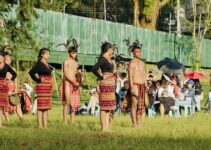Do you know that there are over 600 recognized First Nations in Canada, each with its own unique culture and history? Understanding what shapes Indigenous-government relations in Canada is crucial for building a better future. From historical treaties and land rights to self-government and economic development, the complex interplay of factors continues to impact these relationships. It's important to explore the legal and constitutional framework, as well as social and cultural programs, to understand the ongoing efforts towards reconciliation and building a more equitable society.
Key Takeaways
- Historical treaties and agreements, along with their interpretation and land claims, have been central to shaping Indigenous-government relations in Canada.
- Land rights and resource management play a crucial role in understanding and managing Indigenous-government relations, with Indigenous communities prioritizing environmental stewardship based on traditional knowledge.
- Indigenous communities strive for self-government and autonomy, negotiating with the government to secure greater control over their own affairs and territories.
- The legal and constitutional framework, including court decisions, provides the basis for Indigenous communities to assert their rights and pursue legal remedies, establishing responsibilities and obligations for both Indigenous peoples and the Canadian government.
Historical Treaties and Agreements
When considering the shaping of Indigenous-government relations in Canada, it is essential to look at the historical treaties and agreements that have played a significant role in defining the parameters of this complex relationship. Treaty interpretation and land claims have been central to this dynamic. The interpretation of historical treaties between Indigenous peoples and the Canadian government has often been a source of contention, as differing perspectives on the intent and implications of these agreements have led to ongoing disputes and legal battles. Land claims, rooted in these treaties, continue to be a critical issue, impacting Indigenous communities and their relationship with the government.
The intergenerational impact of historical trauma stemming from these treaties and agreements cannot be overstated. The repercussions of past injustices and broken promises continue to reverberate through Indigenous communities, shaping their present-day interactions with the government. The enduring effects of displacement, loss of autonomy, and cultural suppression have contributed to a legacy of historical trauma that deeply influences Indigenous-government relations today. Understanding and addressing these historical legacies is crucial for fostering a more equitable and respectful relationship between Indigenous peoples and the Canadian government.
Land Rights and Resource Management
To understand the dynamics of Indigenous-government relations in Canada, you need to delve into the complexities of land rights and resource management. Environmental stewardship and sustainable development are at the heart of this issue. Indigenous communities have a deep connection to the land and prioritize environmental stewardship based on traditional knowledge. This knowledge, passed down through generations, is invaluable for sustainable resource management. Indigenous peoples have a unique perspective on the environment, often rooted in a holistic understanding of the interconnectedness of all living things. This traditional knowledge, when combined with modern governance practices, can lead to innovative and effective resource management strategies.
Effective Indigenous-government relations with regards to land rights and resource management also require modern governance systems that respect and incorporate traditional knowledge. Indigenous communities are increasingly involved in decision-making processes related to resource management, ensuring that their perspectives are considered and their rights are respected. This collaborative approach can lead to more sustainable and equitable resource management practices, benefiting both Indigenous communities and the broader Canadian society. Balancing traditional knowledge with modern governance is essential for fostering positive and productive relations between Indigenous peoples and the government.
Self-Government and Autonomy
Continuing from the previous discussion, Indigenous communities in Canada exercise varying degrees of self-government and autonomy, shaping their relations with the government. This self-determination is evident through the establishment of governance structures that allow Indigenous communities to make decisions and enact laws that are specific to their needs and traditions. The level of autonomy varies among different Indigenous groups, but the overarching goal is to assert control over their own affairs and territories.
To understand the complexities of self-government and autonomy in Indigenous-Government relations, consider the following:
- Self-Determination: Indigenous communities strive to assert their right to self-determination, which includes the ability to govern themselves and make decisions that affect their people and territories.
- Governance Structures: Indigenous communities have developed unique governance structures that reflect their cultural values and traditional decision-making processes. These structures are designed to empower Indigenous leaders and ensure that their voices are heard in matters that affect their communities.
- Negotiations with the Government: Indigenous communities often engage in negotiations with the government to secure greater autonomy and self-government powers. These discussions aim to redefine the relationship between Indigenous communities and the Canadian government, acknowledging the inherent rights of Indigenous peoples to self-governance.
Legal and Constitutional Framework
The legal and constitutional framework provides the basis for Indigenous communities to assert their rights and negotiate their autonomy within the Canadian government system. The constitutional framework in Canada recognizes and protects Indigenous rights, including land rights, self-government, and treaty rights. It establishes a legal foundation for Indigenous peoples to engage in meaningful consultations with the government on matters that affect their communities. This framework also sets out legal implications for the relationship between Indigenous peoples and the Canadian government, outlining the responsibilities and obligations of both parties.
The Canadian Constitution, including Section 35 which recognizes and affirms the existing Aboriginal and treaty rights of Indigenous peoples, plays a crucial role in shaping Indigenous-government relations. Additionally, court decisions, such as the landmark Supreme Court of Canada rulings on Indigenous rights and title, contribute to the evolving legal framework that influences these relations. The legal and constitutional framework thus serves as a mechanism for Indigenous communities to pursue legal remedies and assert their inherent rights within the Canadian legal system.
Economic Development and Revenue Sharing
When considering economic development and revenue sharing between Indigenous communities and the government in Canada, it's crucial to analyze the impact of revenue sharing on the economic well-being of Indigenous peoples. Additionally, exploring the different economic development strategies employed by Indigenous communities can provide valuable insights into their relationship with the government. This discussion will shed light on the complex dynamics of economic development and revenue sharing within Indigenous-government relations in Canada.
Revenue Sharing Impact
You can shape economic development and revenue sharing by understanding the impact of revenue sharing on Indigenous-government relations in Canada. The impact of revenue sharing goes beyond just financial compensation; it influences resource management and economic benefits for Indigenous communities. Here's how revenue sharing impacts Indigenous-government relations:
- Economic benefits: Revenue sharing directly contributes to the economic development of Indigenous communities, leading to improved infrastructure, job creation, and overall economic growth.
- Resource management: It allows Indigenous peoples to have a stake in the management of resources on their traditional lands, leading to sustainable development and environmental conservation.
- Indigenous rights: Revenue sharing upholds Indigenous rights by providing financial compensation for the use of traditional lands and resources, fostering a more equitable relationship with the government.
Understanding these impacts is crucial for fostering positive Indigenous-government relations and sustainable economic development strategies.
Economic Development Strategies
Certainly! Frequently, you can enhance economic development and foster positive relations by implementing effective revenue sharing strategies with Indigenous communities in Canada. Indigenous entrepreneurship and government partnerships are vital for sustainable economic growth and community empowerment. By collaborating with Indigenous entrepreneurs and forming partnerships with the government, Indigenous communities can develop and implement economic development strategies that align with their cultural values and traditions. Through revenue sharing, Indigenous communities can benefit from economic opportunities created within their traditional territories, leading to improved socio-economic conditions and increased self-determination. This approach not only promotes economic development but also strengthens the relationship between Indigenous communities and the government, fostering trust and cooperation.
| Indigenous Entrepreneurship | Government Partnerships | Sustainable Economic Growth | Community Empowerment | Cultural Values |
|---|---|---|---|---|
| Promotes local businesses | Collaborative initiatives | Diversification of economy | Capacity building | Respect for traditions |
This collaborative approach lays the foundation for a more detailed discussion of social and cultural programs and policies.
Social and Cultural Programs and Policies
Amidst ongoing discussions and negotiations, social and cultural programs and policies play a crucial role in shaping Indigenous-government relations in Canada. These initiatives are vital for addressing historical injustices and building a more equitable and inclusive society. Here's how they impact Indigenous-government relations:
- Cultural Preservation: Indigenous social and cultural programs are essential for preserving traditional practices, languages, and customs. These initiatives help Indigenous communities maintain their cultural identity and heritage, fostering a sense of pride and connection to their roots.
- Social Support: Government policies aimed at providing social support to Indigenous communities, such as healthcare, education, and housing programs, are crucial for addressing longstanding socio-economic disparities. These initiatives contribute to improving the overall well-being and quality of life for Indigenous peoples.
- Cultural Awareness Programs: Implementing cultural awareness programs within government institutions and society at large helps foster understanding and respect for Indigenous cultures. This contributes to a more harmonious and mutually respectful relationship between Indigenous peoples and the government.
These programs and policies are essential for fostering understanding, respect, and equity between Indigenous communities and the government. However, they are just one aspect of the broader framework for reconciliation and building trust.
Reconciliation and Truth and Reconciliation Commission
When it comes to reconciliation and the Truth and Reconciliation Commission, it's crucial to acknowledge the impact of residential schools on Indigenous communities. Understanding the efforts for healing and restitution is also essential in this discussion. Additionally, examining the current policies and agreements will provide insight into the ongoing efforts to foster reconciliation between Indigenous peoples and the Canadian government.
Impact of Residential Schools
The impact of residential schools on Indigenous communities in Canada is profound and continues to shape their relationship with the government, as evidenced by the establishment of the Truth and Reconciliation Commission. This dark chapter in Canadian history has had lasting effects, contributing to intergenerational trauma and influencing healing and restitution efforts. The legacy of residential schools has resulted in:
- Intergenerational Trauma: The trauma experienced by Indigenous individuals in residential schools has been passed down through generations, impacting their mental, emotional, and physical well-being.
- Healing Efforts: Efforts to address the trauma and its effects have been ongoing, with a focus on providing culturally sensitive support and resources for healing within Indigenous communities.
- Restitution Efforts: Initiatives aimed at addressing the harm caused by residential schools, including apologies, financial compensation, and support for language and cultural revitalization.
Healing and Restitution Efforts
You can witness the ongoing efforts towards healing and restitution in Indigenous communities through the work of the Truth and Reconciliation Commission. The Truth and Reconciliation Commission has been instrumental in shedding light on the impact of residential schools and has paved the way for healing programs and restitution initiatives. These initiatives aim to address the intergenerational trauma caused by the residential school system and promote healing within Indigenous communities. Healing programs encompass various culturally sensitive approaches, including traditional ceremonies, counseling, and community-based initiatives. Restitution initiatives focus on providing support for those who have been affected by the residential school system, including access to mental health services, educational support, and cultural revitalization efforts. These efforts are crucial in fostering reconciliation and rebuilding trust between Indigenous communities and the government. Transitioning into the subsequent section about 'current policies and agreements', it's important to consider how these healing and restitution efforts intersect with government policies and agreements.
Current Policies and Agreements
As you explore current policies and agreements, delve into the impact of the Truth and Reconciliation Commission on shaping Indigenous-government relations in Canada. This influential commission has significantly contributed to current policies and agreements, fostering a more collaborative and respectful relationship between Indigenous communities and the government. Here are key aspects to consider:
- Reconciliation Efforts: The Truth and Reconciliation Commission has paved the way for ongoing reconciliation efforts, emphasizing the importance of acknowledging historical wrongs and working towards healing and understanding.
- Policy Reforms: The commission's recommendations have spurred the implementation of new policies aimed at addressing the needs and rights of Indigenous peoples, leading to more equitable government relations.
- Cultural Awareness: Current policies and agreements often emphasize the preservation and celebration of Indigenous cultures, promoting a more inclusive and respectful approach to government relations.
The impact of the Truth and Reconciliation Commission continues to shape the landscape of Indigenous-government relations in Canada, highlighting the significance of ongoing efforts towards reconciliation and understanding.
Frequently Asked Questions
How Do Indigenous Communities Feel About the Effectiveness of Truth and Reconciliation Commission in Canada?
Indigenous perspectives on the effectiveness of the Truth and Reconciliation Commission in Canada vary. Some feel progress has been made in acknowledging historical injustices and promoting healing, while others believe more needs to be done to address systemic issues. Overall, reconciliation progress is a complex and ongoing process that requires ongoing dialogue and action to truly bridge the gap between Indigenous communities and the government.
What Are Some of the Key Challenges Faced by Indigenous Communities in the Implementation of Self-Government and Autonomy?
Feeling the weight of challenges, implementing self-government and autonomy requires navigating a complex legal framework. Indigenous communities strive for sovereignty, but face obstacles in asserting autonomy. Balancing traditional governance with Canadian law presents hurdles. As they pursue self-determination, achieving meaningful autonomy demands surmounting these challenges. Embracing sovereignty within the existing legal structure is a intricate path, yet necessary for indigenous communities to secure their rightful place in the governance landscape.
How Do Indigenous Communities View the Current Legal and Constitutional Framework in Canada in Relation to Their Rights and Sovereignty?
In Canada, the legal framework and sovereignty rights are crucial to indigenous communities. The current views on these rights and the constitutional framework vary within indigenous communities. Challenges exist in implementing these rights, but economic initiatives can help. It's important for the government to understand and respect the sovereignty of indigenous communities within the legal framework, fostering mutually beneficial relationships.
What Are Some of the Specific Economic Development Initiatives That Have Been Successful in Promoting Revenue Sharing With Indigenous Communities?
You've asked about successful economic development initiatives promoting revenue sharing with Indigenous communities. Like a river flowing through a canyon, community engagement and resource management are essential. Initiatives like joint ventures in natural resource extraction and partnerships in renewable energy projects have been successful. Revenue-sharing agreements from these initiatives have empowered Indigenous communities, fostering economic growth and sustainable development for the benefit of all involved.
How Do Social and Cultural Programs and Policies Impact the Relationship Between Indigenous Communities and the Government in Canada?
When it comes to social and cultural programs and policies, government funding plays a significant role in impacting the relationship between indigenous communities and the government in Canada. These programs and policies are essential for cultural preservation, community engagement, and shaping policy impact. The allocation of resources and support for these initiatives directly influences the dynamics between indigenous communities and the government, contributing to overall relationship development and sustainability.
Conclusion
As you can see, the complex and dynamic relationship between the Canadian government and Indigenous peoples is shaped by historical treaties, land rights, self-government, legal frameworks, economic development, and social programs. This intricate web of interactions forms the foundation of Indigenous-government relations in Canada, like the intricate threads of a tapestry weaving together a shared history and future.



